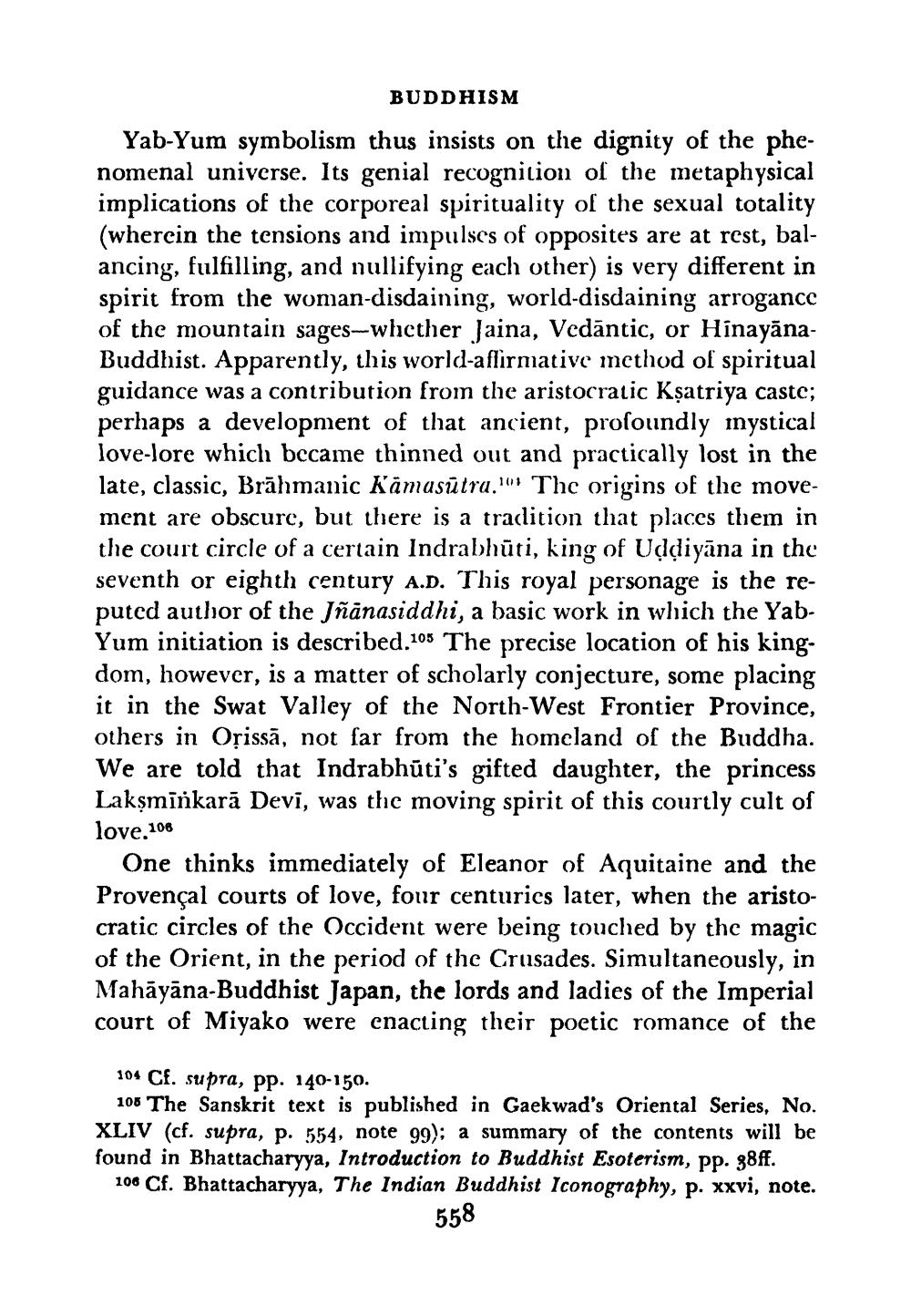________________
BUDDHISM
Yab-Yum symbolism thus insists on the dignity of the phenomenal universe. Its genial recognition of the metaphysical implications of the corporeal spirituality of the sexual totality (wherein the tensions and impulses of opposites are at rest, balancing, fulfilling, and nullifying each other) is very different in spirit from the woman-disdaining, world-disdaining arrogance of the mountain sages-whether Jaina, Vedantic, or HinayanaBuddhist. Apparently, this world-affirmative method of spiritual guidance was a contribution from the aristocratic Ksatriya caste; perhaps a development of that ancient, profoundly mystical love-lore which became thinned out and practically lost in the late, classic, Brahmanic Kāmasūtra. The origins of the movement are obscure, but there is a tradition that places them in the court circle of a certain Indrabhūti, king of Udḍiyāna in the seventh or eighth century A.D. This royal personage is the reputed author of the Jñānasiddhi, a basic work in which the YabYum initiation is described.105 The precise location of his kingdom, however, is a matter of scholarly conjecture, some placing it in the Swat Valley of the North-West Frontier Province, others in Orissa, not far from the homeland of the Buddha. We are told that Indrabhūti's gifted daughter, the princess Lakṣmīnkarā Devi, was the moving spirit of this courtly cult of love.108
One thinks immediately of Eleanor of Aquitaine and the Provençal courts of love, four centuries later, when the aristocratic circles of the Occident were being touched by the magic of the Orient, in the period of the Crusades. Simultaneously, in Mahāyāna-Buddhist Japan, the lords and ladies of the Imperial court of Miyako were enacting their poetic romance of the
104 Cf. supra, pp. 140-150.
105 The Sanskrit text is published in Gaekwad's Oriental Series, No. XLIV (cf. supra, p. 554, note 99); a summary of the contents will be found in Bhattacharyya, Introduction to Buddhist Esoterism, pp. 38ff.
106 Cf. Bhattacharyya, The Indian Buddhist Iconography, p. xxvi, note.
558




